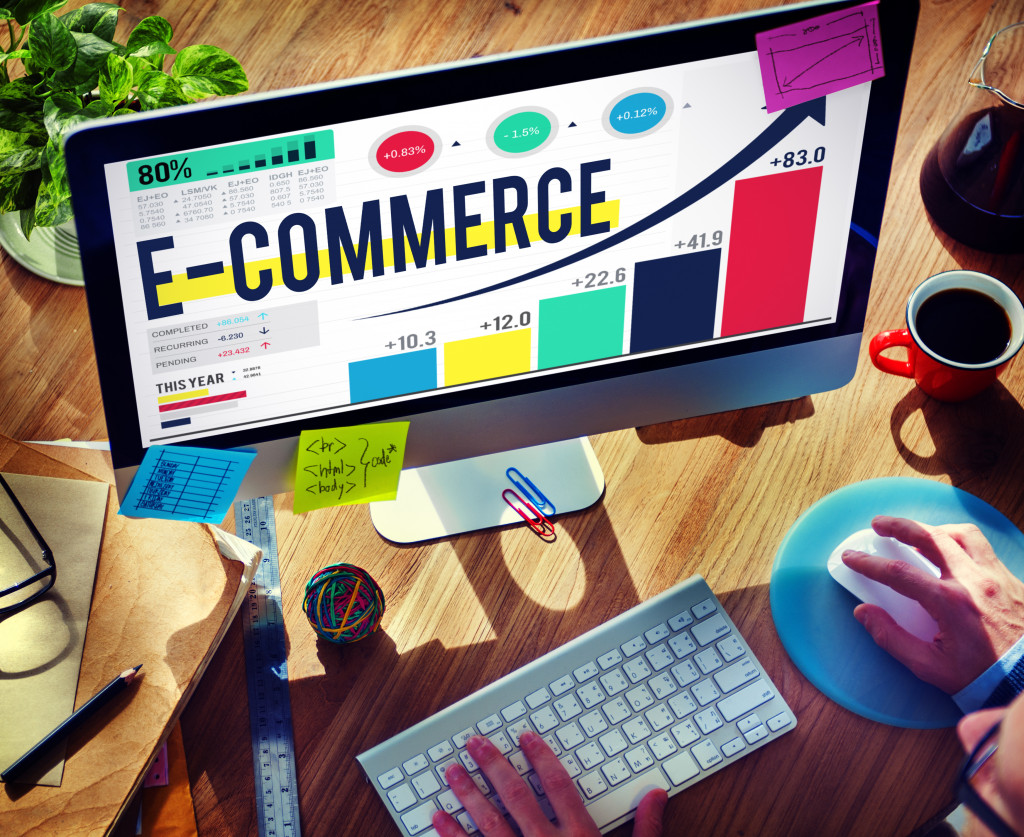- E-commerce is a crucial business strategy, requiring a dedicated platform for secure, efficient transactions.
- Resources, including financial backing, skilled personnel, inventory management, and transportation logistics, are crucial for success.
- Tracking e-commerce system performance using a detailed dashboard and customer feedback is vital.
- Successful e-commerce management not only involves setup but also ongoing optimization and refinement.
E-commerce has proven a significant boon for retail businesses, allowing them to extend their reach beyond physical boundaries and access a global customer base. According to a recent study by eMarketer, retail e-commerce sales worldwide amounted to 5.72 trillion US dollars in 2022, a clear testament to the sector’s exponential growth. Another report from Statista indicated that 81% of consumers use online stores to make purchases, signaling the shift in consumer behavior toward online shopping. This digital revolution in the retail sector has facilitated customer convenience and amplified business growth, making e-commerce an indispensable strategy for contemporary retail businesses.
However, relying on e-commerce services might not be your thing, making it a top priority for you to build an in-house e-commerce platform. This entails several considerations and tasks, with these steps being the most important for setting up your e-commerce business:
Create the Platform

Creating a well-curated e-commerce platform is paramount to ensure your online business’s smooth operation. A dedicated platform provides a professional appearance and ensures that all business transactions are conducted securely and efficiently. It serves as the digital storefront of your business, influencing consumers’ first impressions and shaping their shopping experiences.
There are two main paths to creating your e-commerce platform: using a pre-existing e-commerce platform like Shopify or WooCommerce or building a custom platform from scratch.
Utilizing a pre-existing platform can be a quicker and more cost-effective way to launch your online store. These platforms provide a user-friendly interface, various templates, and integrated payment and shipping options. However, they may limit your control over customization and scalability.
On the other hand, building a custom e-commerce platform offers greater flexibility and personalization. This option allows you to tailor the platform’s design and functionalities to your business needs, optimizing the user experience. This could involve hiring a team of web developers or working with a digital agency. However, custom platforms require a more significant initial investment and take longer to develop.
Regardless of the route you choose, it’s essential to prioritize user experience, security, and scalability in your e-commerce platform to foster customer satisfaction and drive sustainable growth.
Secure the Resources
Of course, setting up your e-commerce platform is only the first step. Securing the resources to ensure continuous performance and secure operations is critical for your online business’s success. Consider these elements while establishing an e-commerce system:
Financial Resources
Securing financial resources is fundamental for the successful operation of your e-commerce business. This includes necessary funds for platform development, inventory procurement, marketing, and other overhead costs. For instance, the development cost could be substantial if you build a custom platform. Moreover, launching marketing campaigns to attract and retain customers could also require significant investment.
Human Resources
Employing skilled individuals is essential in any business, especially in e-commerce, where technical expertise is crucial. Web developers, graphic designers, content creators, and digital marketers make up the backbone of an e-commerce operation. They ensure a functional, attractive platform optimized for customer satisfaction and conversion.
Inventory Management
An effective inventory management system is critical for an e-commerce business, ensuring you maintain a balanced supply of your products. This can help avoid stockouts and overstock, which can cause customer dissatisfaction and excessive storage costs, respectively. Investing in technologies that help forecast demand, track inventory levels, and manage suppliers is essential.
Transportation Logistics
Lastly, a robust transportation logistics system is essential for a successful e-commerce operation, as it ensures timely and efficient delivery of your products to customers. This could involve partnering with reliable courier services or investing in your delivery fleet. A streamlined logistics system enhances customer satisfaction, increases repeat purchases, and boosts your business reputation.
Track the Performance

Once your e-commerce platform is up and running, it’s vital to monitor its performance continually. Tracking your e-commerce system’s performance with a detailed dashboard allows you to understand customer behavior, evaluate your strategies, and make data-driven decisions to optimize your business operations.
You can use tools to track vital factors to ensure your shipping performance meets customer expectations. These include data on order fulfillment accuracy, delivery speed, and logistics costs to help you optimize supply chain efficiency. Additionally, understanding customer metrics such as website traffic conversion rates, average order value, and cart abandonment rate can help you adjust your pricing policies to maximize revenue and profitability. These data points help you identify how customers interact with your site, what popular products are, and where friction points might hinder conversion.
In addition, consider using heatmaps, which visually represent how users interact with your site. They can help pinpoint areas on your site that attract the most attention or might be causing confusion.
Furthermore, integrating customer feedback into your tracking can provide valuable insights into the user experience, helping you identify areas for improvement.
By consistently monitoring these vital factors on your dashboard, you can proactively manage your e-commerce business, continually refine your strategies, and drive sustainable growth. Remember, the key to a successful e-commerce operation lies not just in setting it up but in its ongoing management and optimization.
Final Thoughts
E-commerce is an invaluable business marketing tool, offering convenience and access to a global market. However, establishing and managing an effective e-commerce system entails various considerations and tasks. From creating the platform to tracking performance, taking control of your e-commerce business requires significant thought, effort, and resources. While it might seem daunting initially, with careful planning and a solid team, you can create an e-commerce business that meets customers’ needs while contributing to your bottom line.
